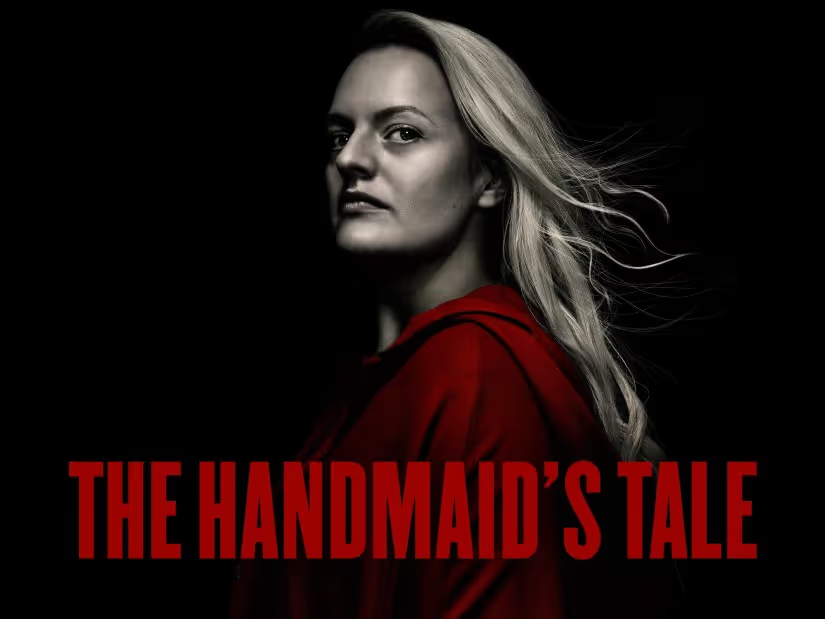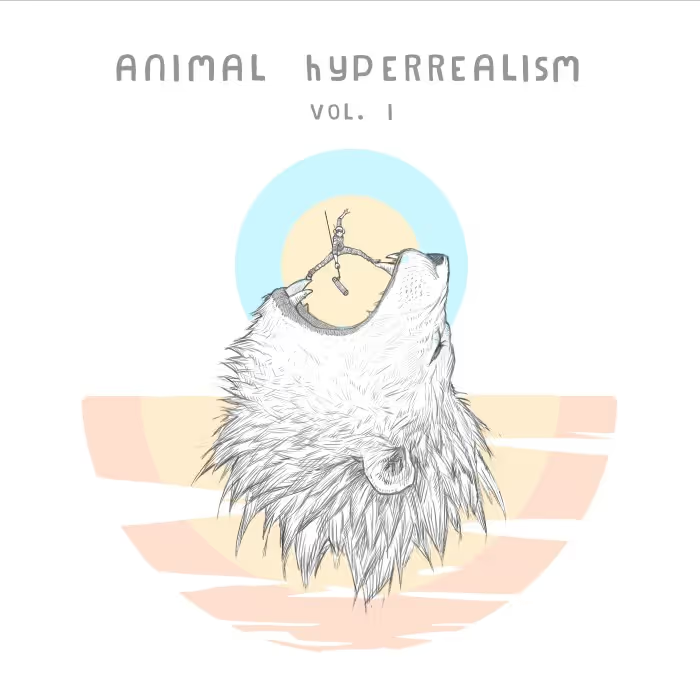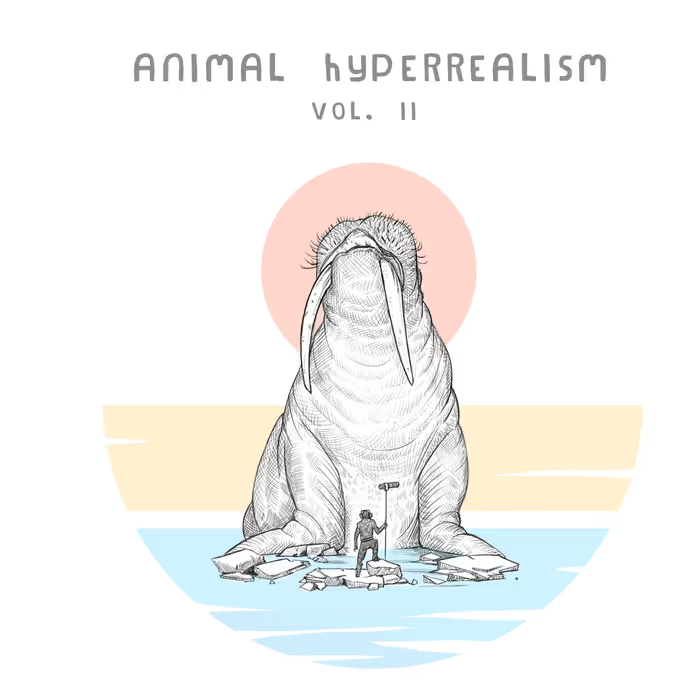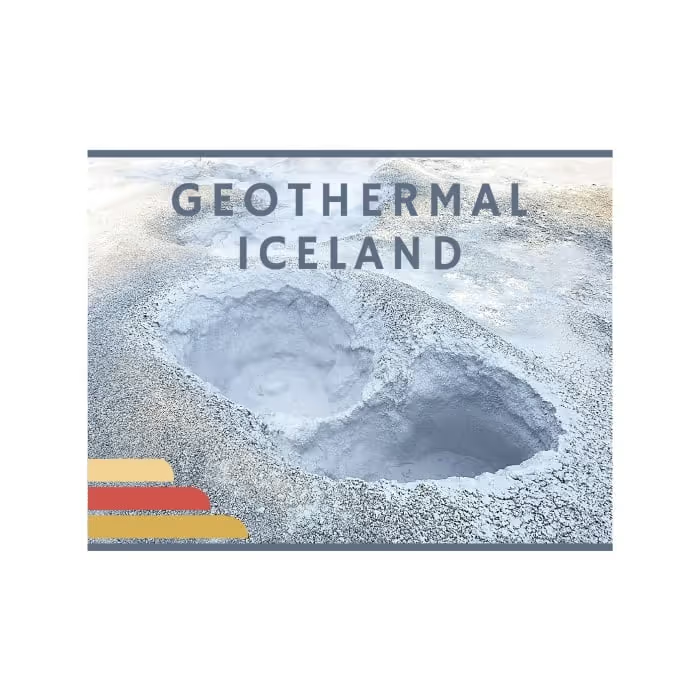C anadian Screen Award-winner and Emmy nom’d supervising sound editor Jane Tattersall, who is SIM International‘s senior vice president of post in Toronto, has been creating sound on Hulu’s original series The Handmaid’s Tale from the start.
She and her sound team defined the orderly, restrictive, dystopian world of Gilead and have expanded that palette with each step that Offred/Ofjoseph/June has taken in her journey to find freedom. Now into Season 4 (with Season 5 officially green-lighted), June manages to make her way to the bombed-out ruins of Chicago where armed insurgents resist the forces of Gilead. It’s a Mad Max-ish world that contrasts the constraint of Gilead.
Here, Tattersall talks about the evolution of the series sound and discusses specifics on interesting sound-driven moments in Season 4. Joining the discussion are sound effects editor Brennan Mercer to talk about the blend of railroad crossing bells with Radiohead’s “Street Spirit (Fade Out)” for the end of Ep. 403 “The Crossing,” and dialogue supervisor David McCallum to talk about the challenges of editing and mixing the tanker car scene in Ep. 404 “Milk.”
https://www.youtube.com/watch?v=rg_160Be71g
The Handmaid’s Tale Season 4 Official Trailer
Now in Season 4, the world of The Handmaid’s Tale has grown well beyond Gilead. But has the sound of Gilead itself evolved since that first season?
Jane Tattersall (JT): That’s an interesting question because I was just looking over some of the episodes from this season and previous seasons because I’ve forgotten what it sounded like in the first season.
But I think the sound of Gilead hasn’t changed that much because it’s a static society. The goal of Gilead is to preserve the past when women were meant to be childbearing creatures in the home. So what we set up for that world, sound-wise, is static — there are still lots of birds and the cars are electric.
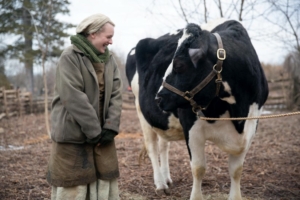
But the way the series has evolved, we spend a little bit less time in Gilead and more with wherever June is going because June has broken free of the Gilead world. She’s basically on the run. We see her at the beginning of the season, and she’s in a hiding place, which is not Gilead. It’s the free world. But Gilead has dominated the United States so they’re still in hiding.
June is hiding in a beautiful, tranquil, idyllic place. It’s a farm. There are cows mooing and birds chirping. But it’s a world in which nothing much changes. And June (formerly Offred) realizes she could live out her life here. She has her friends, other handmaids there with her, and they could just stay there.
It becomes much more of a thriller, story-wise, and so the sound reflects that.
But they’re not making a difference; June is not making a difference and it’s her job in the world to get out of there. So while we do spend a couple of episodes on the farm (with cuts to Gilead so we remember where she came from), June doesn’t stay there. She gets captured and returned to the world of Gilead. It’s very harsh. She’s a prisoner and her fellow handmaids are prisoners. It’s very regimented and strict. She eventually escapes and travels through different places so the sound of the world changes. It becomes much more of a thriller, story-wise, and so the sound reflects that.
I think back on the first season, when we spent a lot of time in single places. The goal was to make the backgrounds interesting because, if you’re in the same room, how do you make it interesting and textured and not just flat and boring?
Now we’re much more focused on the characters and the action. There are more types of vehicles and there’s more weaponry. There are planes and jet fighters and so on. So the sound of the world is much more in your face.
Towards the end of this season, there are more scenes where June is staying inside a lot. She’s not really doing anything and she’s thinking. For that, we’re back to using different textures. But later, there’s much more action and so we have that in-your-face kind of sound. I’d say that’s the overall sound approach in terms of sound effects and sound design and atmospheres. That’s the difference from the first season.
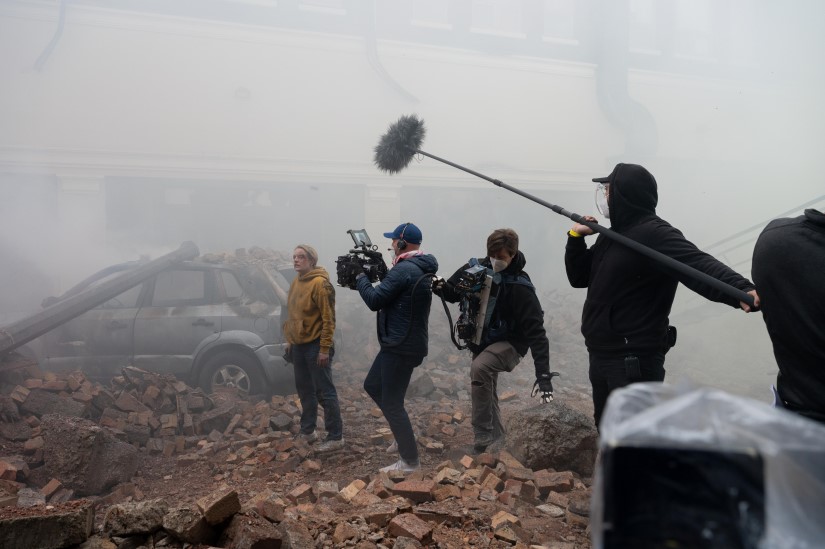
Are there any unifying sonic characteristics that define the reality outside of Gilead? For example, Chicago is this bombed-out ruined mess. It’s post-apocalyptic. Are there any sonic characteristics that help to define what that world is in comparison to the sound of Gilead?
JT: Yeah, I think it’s a much more ragged kind of sound.
One of the things that we talked about was that it’s a little bit more Mad Max, so everything’s kind of jury-rigged. The mechanical sounds of things are ragged sounding — not nice, clean manufactured sounds but ragged.
…the sound that goes with that is handmade; it’s noisy. They’re not efficient machine sounds.
In Chicago, in particular, there is that quality of sound. There are people making things —welding and hammering things because they just have to make the best of things. It’s almost like being in a refugee camp where you have no supplies so you just have to make do with what you’ve got. So the sound that goes with that is handmade; it’s noisy. They’re not efficient machine sounds.
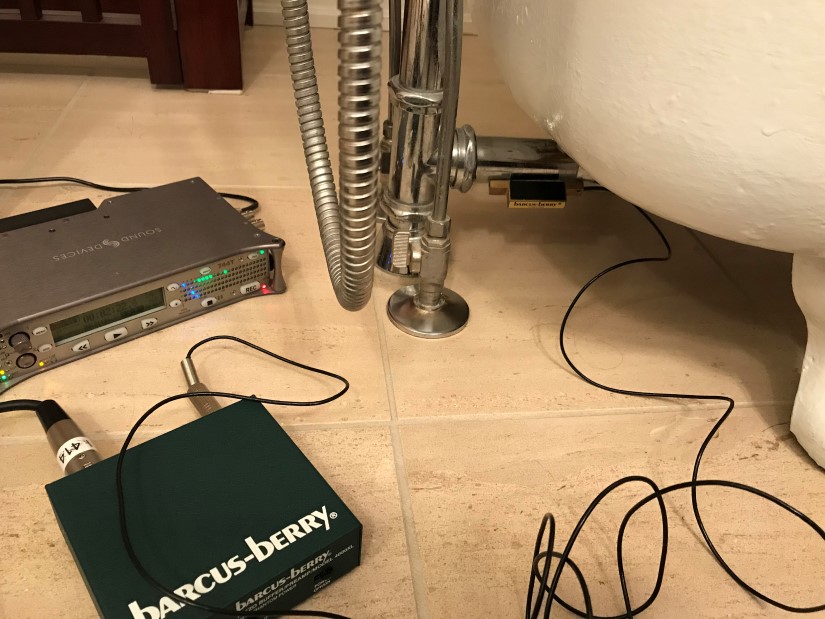
Did you get to do any custom recordings or field recordings to create the sounds for this ragged, cobbled-together, handmade world outside Gilead?
JT: I always like to do as much recording as possible because sometimes it’s actually easier just to record something than it is to look for a sound in the library or from previous seasons.
To give you an example, there’s a scene when June and Janine are running from people who are chasing them, and they jump on-board a train, inside a tanker car that was filled with milk. The train starts moving and they’re drowning in milk, which is a wonderful statement because Gilead is the place of milk and honey; it’s supposed to be the most ideal world and here they are being drowned in milk.
There’s nothing to grasp on to inside of the car, so they have to find the drain at the bottom of the tanker car and let the milk drain out.
I did a bunch of recording with contact mics on different parts of the bathtub…
We had to figure out a draining milk sound for inside the train car. It’s very echo-y and metallic. Luckily, I have a clawfoot cast iron bathtub. I did a bunch of recording with contact mics on different parts of the bathtub, both filling it up and then draining it. I manipulated that sound to make the milk draining sound for the show.
Of course, it’s a much different scale: a bathtub versus a tanker car, but it was a good main element to start with in order to delineate the space they’re in. And then we tried to get lots of sloshing sounds, sloshing within metal, and so I did some recording of that. And of course, there are great reverbs that were applied in the editorial side and then in the mixing side.
There’s always some recording to do on every episode, but they’re much smaller things.
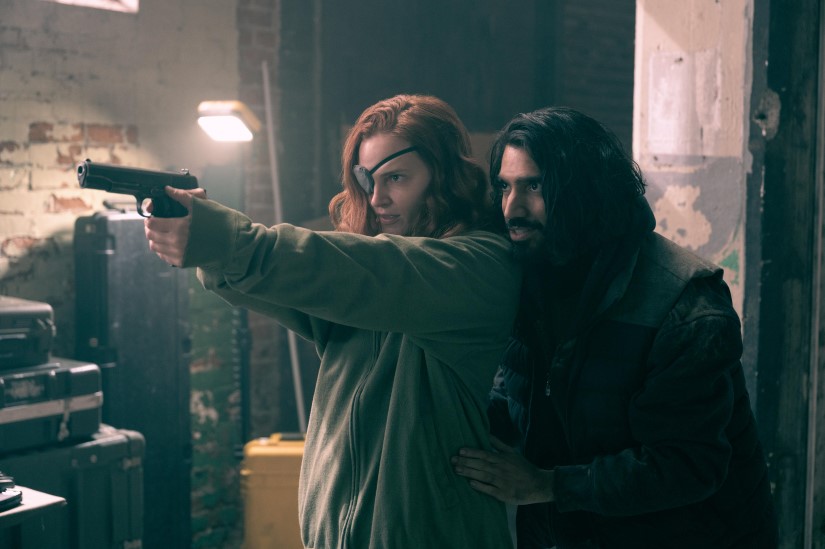
In the warehouse in Chicago, it’s almost like a foundry with people welding and cobbling metal together. Did you do any fun recordings for that?
JT: Yes, metal is always a great thing to record because it’s a little bit resonant and it is distinctive. Metal is like a sound effects editor’s texture layer — it’s a wonderful thing to work with.
Metal is like a sound effects editor’s texture layer — it’s a wonderful thing to work with.
Myself and Brennan Mercer, the other sound effects editor, we recorded banging sounds. I mean we probably have loads of banging sounds already, but we did some more banging sounds and hammering sound and gun shells (bullet casings) dropping to the ground because they’re now in a place which has weapons and they’ve got their cache of weapons and there’s an indoor firing range there.
 Tesla Model X 2015 electric full size crossover SUV sport utility vehicleKrampfstadt Studio65,00 $32,00 $51% OFF
Tesla Model X 2015 electric full size crossover SUV sport utility vehicleKrampfstadt Studio65,00 $32,00 $51% OFF
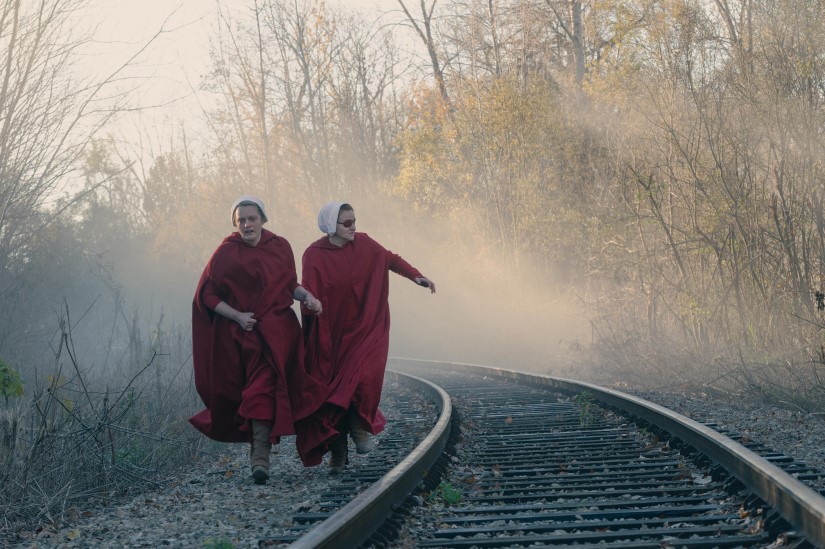
I loved the end of Ep. 3 “The Crossing.” There’s the Radiohead “Street Spirit (Fade Out)” song and the train crossing warning bell is clanging along with the music. Can you talk about the sound and mix of that scene?
JT: Yeah, I have to say, this is a hundred percent Brennan [Mercer] who came up with this idea. We needed the crossing bell — that is a normal thing to have when a train goes past a road and everybody is familiar with that sound.
Fortunately, the piece of music that went there allowed for the sound to be married to it.
Brennan Mercer (BM): For this scene, we were asked to create an extra layer of tension using sound design, but of course anything we created had to compliment the Radiohead song as it would be the prominent feature in the soundtrack during the sequence.
When it comes to sound design, I’m usually inclined to use elements that occur naturally in the environment as the basis of the sound, which can then be layered further or abstracted if need be.
As the van comes to a stop at the railroad tracks, we see the railroad crossing arms descending, and the warning signals flashing, so using the railroad crossing “warning bell” was the natural choice.
…the song wasn’t quantized to a specific tempo, so I had to match each note as it drifted in and out of tempo.
The rhythmic pulse of “Street Spirit (Fade Out)” is driven by the guitar lick at the opening, so I pitched the warning bells to match the key of the song, created a loop, and then painstakingly warped each ding to each guitar note — the song wasn’t quantized to a specific tempo, so I had to match each note as it drifted in and out of tempo.
Once it was all sync’d up, I listened back to the sequence and realized that it sounded “too musical.” It starts off sounding like a distinct railroad crossing bell but after a minute it melded perfectly into the song and became a “cowbell” type layer indistinguishable from the instrumentation of the song. For this reason, I changed the bell back to its original pitch, which helped to distinguish it from the music over the course of the scene.
…we decided to re-edit portions of the crossing bell, so that it slipped in and out of tempo…
Once the mixers took a pass on the material, they had a similar feeling: the crossing bell blended too seamlessly with the song (even with it being out of key). So we decided to re-edit portions of the crossing bell, so that it slipped in and out of tempo with the song at different points, falling back into sync at pivotal moments, or when the railroad tracks/crossing signal were on screen.
Similar to many other sound-related choices in this series, sound cues of the detuned and off-kilter nature were preferred over their pitch-perfect counterparts.
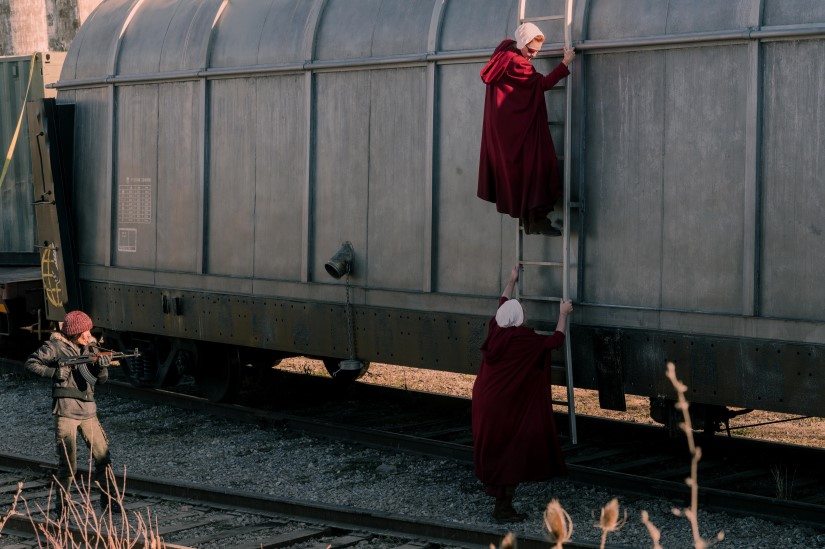
The train sounds continue into the next episode. June and Janine are looking for a westbound train and they’re in the train yard at night. How did you use the sounds of the train to help build tension there?
JT: One important thing, story-wise, was to make the audience aware that they were actually in danger and there was the possibility of being discovered. You could see there were workers there, and we wanted to describe what kind of workers there were.
There’s some really good loop group from the actors who are loading up a train full of things bound for either Gilead or for Chicago. So we needed to hear the voices in order to make it seem like June and Janine were in danger, but on the other hand, we didn’t want them to be heard so clearly, because then why couldn’t they hear Janine and June as they were walking along or creeping along the tracks?
We needed to have other train sounds in order to mask their presence.
If you’ve been on railway tracks, you know that the stones are very noisy. When you walk on them, it’s pretty hard to sneak by. We needed to have other train sounds in order to mask their presence. So it was a balance of shunting trains and moving trains, which are just a wonderful, evocative sound.
We kind of overdid it at first. It wasn’t a big railway train yard, but just a place where trains get loaded up and so we had a train going by in the distance so that would help mask it, then the occasional train cars clanking together and a couple of horns. We had to look up what the train horns mean so that we didn’t have the wrong train horns.
…when you put music in, it sort of gives you an emotional sense, but it also distances you from the action.
So it was a mixture of heavy, mechanical train sounds and the voices. There are a couple of trucks that go by as they’re loading up things onto the train.
Originally, there was music all the way through it. And sometimes when you put music in, it sort of gives you an emotional sense, but it also distances you from the action. So during the mix, we took some music out and then repositioned the music to come a little bit later in order to have the quiet tension. We have it resume as they’re on their journey.
[tweet_box]Handling the Sound of ‘The Handmaid’s Tale'[/tweet_box]
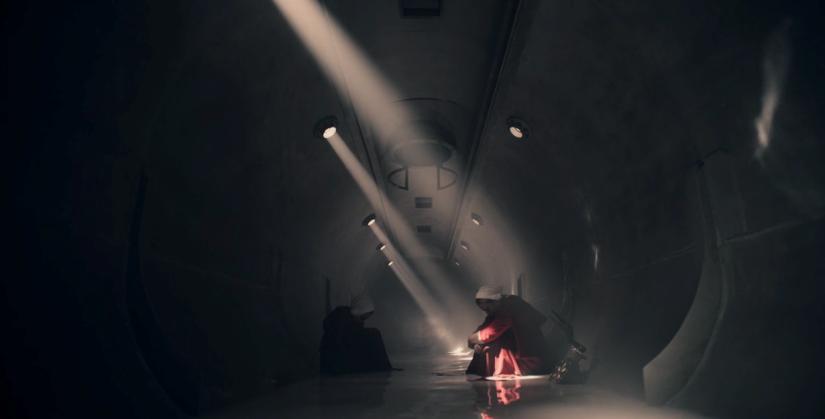
When June and Janine are in that tanker car full of milk, that must have been tricky for dialogue since the characters are submerged/partially submerged in water! Can you talk about the work you had to do on that scene? Also, what did you use for the reverb on the dialogue inside the empty train car?
JT: David McCallum, the dialogue supervisor, did the most extraordinary work on it. I believe there were just a couple of lines of ADR in there. Most of it was salvageable, and that’s a bit of a miracle considering the environment with the water splashing around.
David McCallum (DM): The dialogue editorial for this scene required multiple passes and multiple strategies. There were four parts to address, and each required a different approach.
Part One, “The Plunge,” was built primarily from the production dialogue recordings. There was some additional material mined from alternate takes, as well as a bit of ADR for Janine, but most of what you hear is sync production sound. These recordings were boom-only, as both actors were submerged in the milk.
I consider Part Two to be the section when the train starts moving. June and Janine are struggling to stay above the milk, while June searches for a drain. This was quite a complex section for dialogue editorial. We were dealing with a lot of unwanted noise from set, there was some additional dialogue required from both actors, and we faced the obvious issue of creating the danger that June and Janine were facing if they weren’t able to find a way to drain the milk. For this section, none of the production dialogue was usable from set, so I was starting from scratch with Part Two.
For this section, none of the production dialogue was usable from set, so I was starting from scratch with Part Two.
The obvious solution to these problems was to re-record in ADR. However, at the time we were working on Ep. 404, Elisabeth Moss was in prep as director for Episodes 408 and 409, and we simply didn’t have access to her for the amount of time that would be required to re-record her material in-studio. So I set about to build a hybrid version of the scene from alternate production slates, ADR for Madeline Brewer, and whatever ADR we could get from Elisabeth Moss when her schedule would allow.
I started Part Two by focusing on June. The first step was to review all of the material from the production sound recordings. I went through each slate and isolated any usable gasp, cough, or gagging sound I could find, building a small collection of dialogue sound effects for her breaths and efforts. The second step was to search through my library of ADR breaths and efforts that I have accumulated for June through the first three seasons — whenever we record ADR with Elisabeth Moss we organize and catalogue all non-speaking sounds, building up a library of breaths and efforts. By Season 4, my collection is quite elaborate, and has come in quite handy on all episodes this season.
With this material, I was able to re-construct about 60% of the scene for June. I still needed her spoken dialogue, along with a few more inhale and exhale sounds, but after putting this material together I felt the scene was feeling pretty realistic.
For Janine, Part Two was completely ADR. I had access to Madeline Brewer for 3 to 4 hours for Ep. 404 as she had a lot of cues in this episode. We did all of her main ADR first, before circling back and tackling this sequence last. Madeline worked extremely hard. We did the core dialogue in the tank first, with four passes of choking and gagging efforts at the end. Janine is in real distress during this section, and Madeline put in a lot of physical effort to bring the scene to life. I think she recorded herself performing her last take on her phone for posterity.
We did the core dialogue in the tank first, with four passes of choking and gagging efforts at the end.
The final step was for Elisabeth Moss to record June’s ADR. By the time she came in, all of the work mentioned above was complete, and I was able to review it with her on the recording stage. We were then able to be very targeted in what we recorded. What remained to record didn’t take too long. Elisabeth was very relieved to not have to record the entire scene.
Part Three, “The Argument,” was the hardest section. It took the most experimentation and exploration, and is one of the two scenes in Season 4 that I’m most proud of.
At over 6 minutes, the section is long. ADR replacement was not an option we could consider — for many reasons that would make up its own article. We simply can’t re-record a scene like this in The Handmaid’s Tale. A third complicating factor was the varied quality of the production sound slates due to set movement and microphone proximity.
A third complicating factor was the varied quality of the production sound slates due to set movement and microphone proximity.
This sequence was actually the first that I took on in the episode. I started by organizing the dialogue into three separate groups for each actor; the first group was slates that I thought were fine; the second group was slates that I thought may respond well to iZotope RX noise reduction; and the third group was slates that would need to be rebuilt.
To begin, I simply ignored material that was fine alone and started focusing on the slates where we either needed to replace or repair the dialogue. I took on Janine’s angles first, followed by June’s.
For Janine, unfortunately, all but one of the production sound slates had the same amount of set-shaking noise and sloshing milk, so choices for alternate takes were limited. But in one lucky stroke of fortune, I found one slate that was perfectly clean for all of her key dialogue. So I experimented with RX noise-reduction on her spoken words, while replacing the breaths and efforts between the words with material from our one clean slate. Since Madeline was quite consistent in her timing and delivery, I was able to run the clean slates from syllable to syllable, crossing over to the noise-reduced sync production lines as late as possible in order to preserve her original performance. This was painstakingly slow, but ultimately worked extremely well. We only recorded 3 lines of ADR and a couple of breaths from Madeline in this section.
Section three for June was more straightforward. Her spoken dialogue was clean, with access to both boom and lavalier microphones. However, we wanted to make sure the audience felt the cold of the container, so we re-built the space between her dialogue with shivers and cold breaths that came mostly from our June ADR library.
…we re-built the space between her dialogue with shivers and cold breaths that came mostly from our June ADR library.
Looking at my session now, I think about 40% of the slates are sync production, 30% were repaired using various RX noise reduction tools, 25% was rebuilt from alternate slates and 5% was ADR.
The fourth and last part on the train to Chicago was “The Attack,” when the train stops and June and Janine exit the container. For this part, I worked just as hard with the production sound as on the previous three scenes, however, when in ADR I asked both actors to give it another go. Both Madeline Brewer and Elisabeth Moss did outstanding work here, and I believe we used all ADR for this section – a rarity for The Handmaid’s Tale.
In terms of reverb, the production sound recordings had a nice natural reverb on them, so we worked with that as our guide. In addition to the natural reverb, our re-recording mixer Lou Solakofski used two different settings of Audio Ease’s Altiverb to create the feeling inside the container. The sound of the reverb changed depending on the amount of milk in the container, and Lou adjusted his settings as the sequences evolved.
I spent most of my time for Ep. 404 working on the milk train to Chicago. Fortunately, my wonderful dialogue editor Krystin Hunter was able to manage the editorial for the rest of the episode while I worked away on these sections. She also handled the crowd ADR recording for the whole season. Krystin did an excellent job on Ep. 404.
Overall, I think the work on the milk-train to Chicago for Ep. 404 was the best work I have done on The Handmaid’s Tale – that is until I got to Ep. 406.
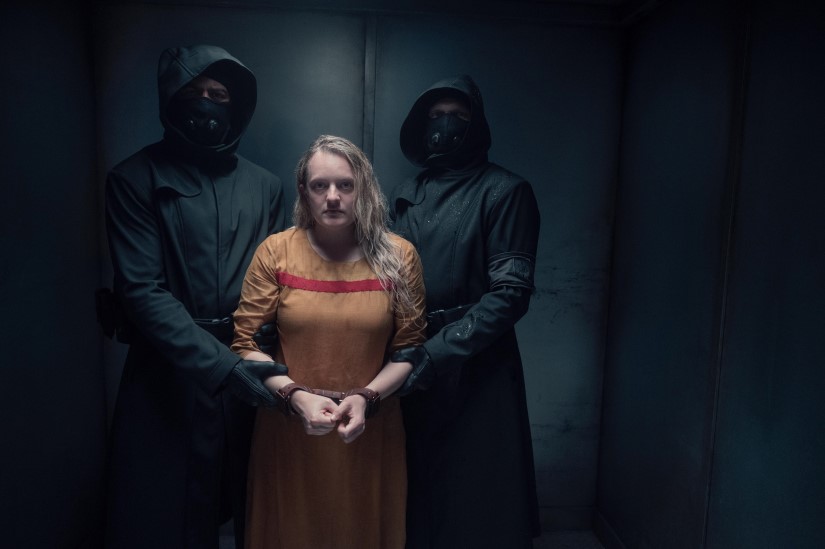
Is there anything you’d like to add about the sound of Season 4 so far?
JT: I would like to continue to say that the producers on the show are so interested in sound and are so sensitive to sound. We, of course, had to change our way of playing back. So now people are not listening in the studio; they’re listening in their homes. We sent them all special headphones so that we’re all listening with the same type of headphones. That makes the sound actually clearer because it’s a more immersive experience and that can have the result of people not wanting some of the background sounds and some of the background car passes or dog barks or whatever because they’re more discernible.
They embraced the detail of the sound in ways that all sound editors do. So it’s really a fantastic and rewarding experience.
But, in fact, they’ve embraced the technology and have said that this system is the way they’d like to keep working if possible, even after everything returns to normal. They’re also very sensitive to the tiniest little sound, and should we have that sound or should we not have that sound? It’s wonderful; it’s probably a bit like being a production designer or art director, and should you have this book lying down or do you have it standing up, and people are interested in the discussion about that and what color the book is and what’s on its cover. Basically, it’s just the detail. They embraced the detail of the sound in ways that all sound editors do. So it’s really a fantastic and rewarding experience.
A big thanks to Jane Tattersall, David McCallum, and Brennan Mercer for giving us a behind-the-scenes look at the sound of The Handmaid’s Tale and to Jennifer Walden for the interview!
 Tesla Model X 2015 electric full size crossover SUV sport utility vehicleKrampfstadt Studio65,00 $32,00 $51% OFF
Tesla Model X 2015 electric full size crossover SUV sport utility vehicleKrampfstadt Studio65,00 $32,00 $51% OFF

